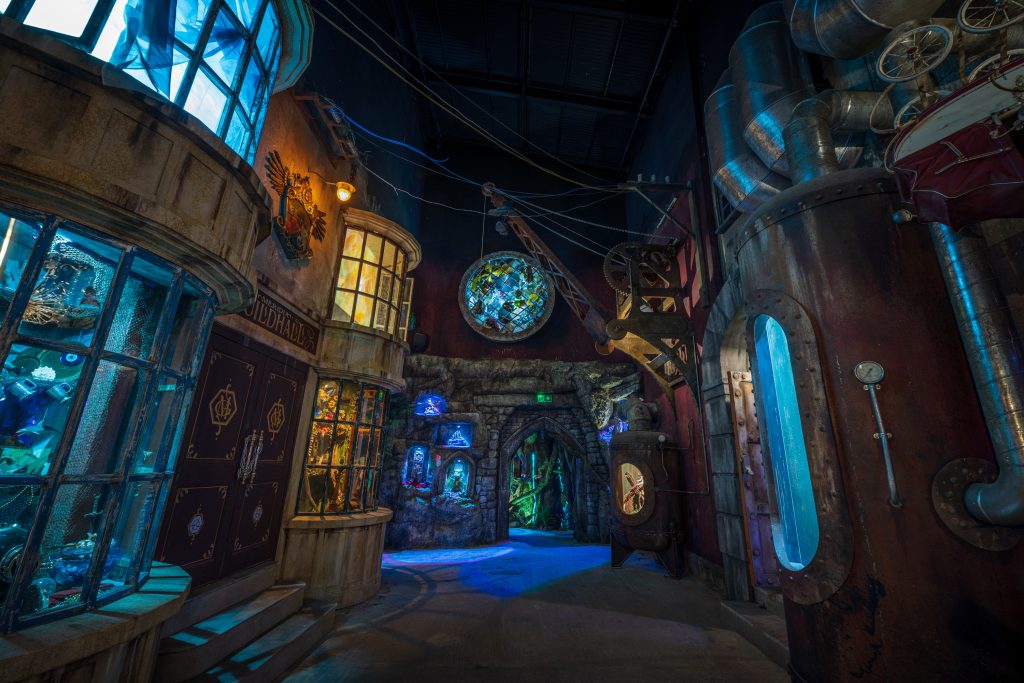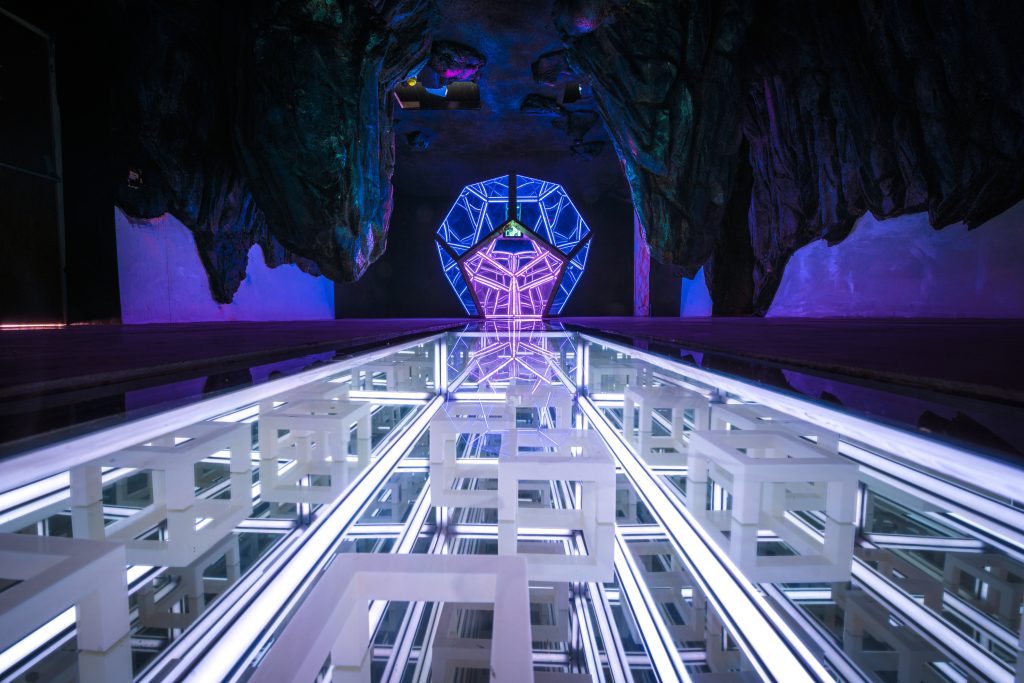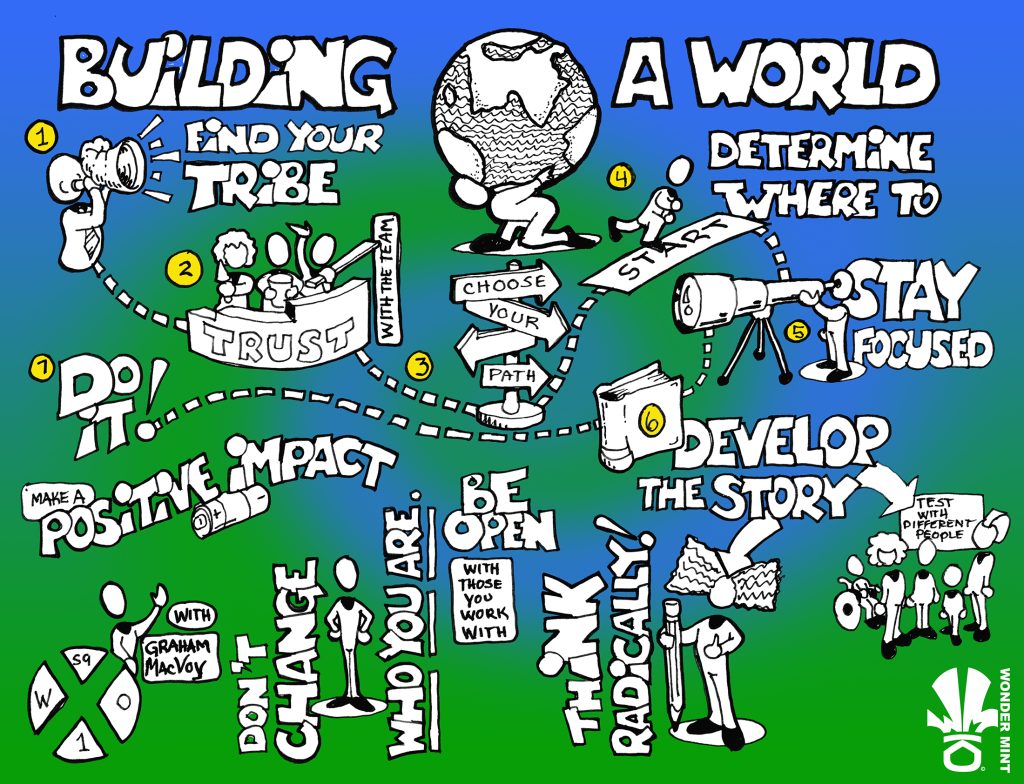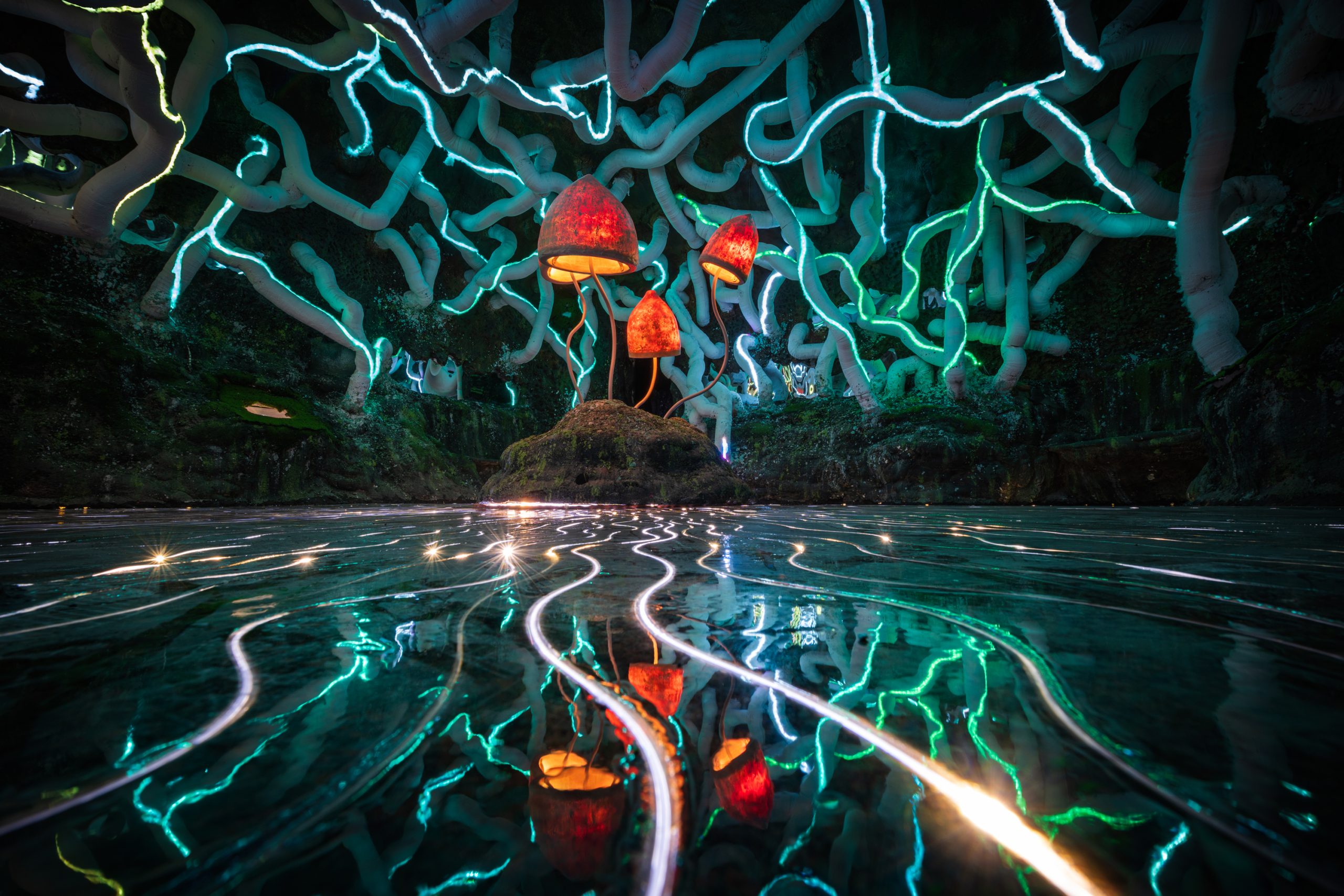Risk taking and gut feeling are a huge part of business, especially for an entrepreneur.
And when you’re not only building a product, but building an entire world, that determination to succeed is crucial if you’re not only going to convince yourself that it’s a good idea, but bring others along with you, too.
Graham Macvoy is Co-Founder and Managing Director at Wake The Tiger, the world’s first “amazement park” in Bristol, UK. He’s also part of the team behind Boomtown Festival, a purpose-driven, underground “rave festival” that happens once a year. But when the pandemic shut down the music sector in 2020, he decided to follow his gut feeling to create a permanent immersive visitor attraction bringing that same magic to a wider, year-round audience.
The result was Wake The Tiger, which officially opened to visitors in July 2022. In the 18 months since, the park has achieved the following remarkable milestones:
- Over 300,000 visitors (in a city of around 500,000)
- 70% of which are families
- An age range from 0 to over 100
- Booking reach across six continents and over 60 countries
- 9% return visits, with a membership plan in place to boost this figure
- Secured an additional £2million in funding
As a result of this success, in February 2020 the park will be opening The OUTERverse, an expansion that will double the size and quality of the attraction. Ahead of its launch, Macvoy shares how it went from the seed of an idea to a fully funded, sustainable immersive business – and the three lessons creative entrepreneurs can take from his journey.
Lesson 1: Your Sixth Sense Will Keep You Safe
“It’s the middle of the pandemic and the music festival sector is on its knees. So perhaps now’s the time to finally do the thing we’ve spent years talking about…”
Graham Macvoy
Long before it became a reality, Wake The Tiger was a fledgling dream for both Macvoy and Luke Mitchell, Creative Director at Boomtown Festival. They both shared the desire to launch a more permanent experience, taking what 60,000 people discover over five days at Boomtown and bringing it to a wider demographic. However, time was never on their side – until Covid hit…
Once they’d furloughed their staff, arranged business loans, and redesigned the whole festival so that it would be robust enough to survive the new climate, they realised they had a void in their schedules – and an opportunity to give their idea some thought.
Setting up a high CapEx bricks-and-mortar business is hard at any time, let alone when your sector is closed down. Boomtown happened to own a warehouse in which they had hosted four sold-out club nights before the pandemic: but Macvoy had bigger dreams to turn this derelict building into an amazement park. This meant starting from scratch working out the company direction, finances, opportunities, and what to do – and not to do. In the end, they had to lead on gut feeling and trusting in their considerable experience in the live events sector, and each other.
“I firmly believe that your sixth sense keeps you safe. It’s crucial, especially for an entrepreneur. You also need to be the sort of person that has an appetite for risk and a determination to succeed. Everything inside me was screaming to go for it.”
Graham Macvoy
Lesson 2: Set Your Vision By Your Values

Gut feeling is the first step – but to reach your destination, you also need to have a vision for how to get there. As a business, Wake The Tiger wants to use the power of creativity to inspire a world that works for all by combining purpose, storytelling, and art.
“We believe that for a society to truly succeed, it needs to be in harmony with nature, equitable and fair. To achieve this, it’s essential that the business measures success in more than just financial terms, but equally by its impact on the environment, the redistribution of wealth, and support for those most in need.”
Graham Macvoy
For Macvoy, this meant that Wake The Tiger had to be guided by three values distilled from his and Mitchell’s experience at Boomtown: creative, inclusive, and transformative.
Creative: Choosing The Path
When you create a new IP of any sort, it’s incredibly daunting. You’re faced with a blank sheet and can go in any direction. To avoid being overwhelmed, you want to tighten that net and focus on your concept. This was brought home to Macvoy when Doug Francisco of Innovate UK advised him to strip things back. “You’re great at building worlds and being creative. Focus on that and don’t worry about the other things,” he said.
From their original idea to build different art exhibits, the team went on a creative journey which resulted in them realising that they actually wanted to build a whole world and storyline with a cohesive theme. They pulled on the threads of real life, taking the abandoned factory setting and incorporating it into the story. And they knew they wanted a strong message as the base for the whole experience, with an environmental point of view. The resulting story is one where visitors cross through a portal and into an alternate vision of Earth in the aftermath of social and environmental collapse, where they attempt to help a group of survivors rebuild their community.
While this narrative has helped to inform the creative, it hasn’t restricted it. This is so that the art installations aren’t inhibited by narrow story parameters. Macvoy believes that narrative is important for the development of the brand and the business when it comes to extending the IP into films, books, and so on, and creating a back story for the world. However, this story can be critical or incidental, giving creative space as it develops.
Inclusive: Designing Accessibility From The Start
Knowing that true inclusivity was a key value for Wake The Tiger, the team built it into the design process from the very beginning. They tested the space with wheelchair users and those with impaired vision, realising that they would have to rework crawl spaces and tunnels. They created an online access document for anyone who might need it. And they hold sensory sessions, with staff trained to help those with different needs.
On the second day of being open, an emotional wheelchair user told them that it was one of the best immersive experiences they’d been to, as they felt they hadn’t really missed out on anything. This principle of inclusivity has informed the park’s evolution since, introducing drag artists and signed spoken word sessions to make sure everyone has a chance to get involved.
Transformative: Considering Your Impact
Wake The Tiger was designed with imagination and to create connection. The impacts of this principle can be seen in visitors, staff, the environment, and society. Macvoy has seen a notable transformation in neurodiverse staff members, who have gained confidence. In environmental terms, while there’s always more to be done until we’re net positive and any CapEx development is resource heavy, the park uses as little concrete and steel as possible, doesn’t serve meat, and is undergoing B Corp certification. And when it comes to its impact on society, Wake The Tiger is starting to work with charities and educational partnerships, as well as creating career pathways into the immersive sector.
Lesson 3: Sell Your “Sticky Idea”

So you’ve got your vision, your values, and your plan. Now comes the tricky bit: getting the funding to make it all a reality. Macvoy admits that he pitched over 100 times to investors, and yet by November 2022 – three months out from build date – still had no funding. The team used some money from Boomtown’s Covid recovery fund, part of which had been allocated to renting the warehouse, to build a test space. This managed to get them to 35% of their funding, enabling them to start building in early January 2022. The next six months until opening were a process of securing one investor at a time in order to keep going.
“We didn’t know if anyone was going to buy tickets, but we believed in ourselves. In the end we opened on time, and sold lots of tickets, thanks to this determination and an amazing team.”
Graham Macvoy
Macvoy credits getting the investment needed down to a few key points:
- Resilience! He kept pitching over and over again, sometimes for 8-9 months, as an investor might be useful further down the line.
- Looking for investors with similar values. Being honest about yourself, resonating and building trust were very important.
- Once the initial, highest-risk investor was secured, it became easier to get others on board.
- Having a good, concise pitch deck of no more than 10 minutes, that was clear on what they were selling.
- Learning to avoid venture capitalists (VCs), for whom it was too early to invest and who were largely more interested in tech.
These lessons resonate with other WXO Members with experience in the investment space.
“There are buckets like tech that big investments glom onto, but also other “sticky ideas” that people with courage invest in. They have to have the downward return, looking at our realm as creating some kind of structure around how investment materialises. Your funding is testament not only to your idea, but your determination.”
Joe Salcedo
“I’m a venture partner in an investment fund specialising in entertainment tech. When we’re looking to fund something, the first thing we look at is the individuals. It resonates with me that a lot of my colleagues will go to serial entrepreneurs – that experience counts for a lot.”
Lou Murray
The WXO Take-Out

Many of the lessons outlined by Macvoy remind us of the conversation in 7 Ways To Make An Iconic Experience In 2024 – in particular, concentrating on the intent of your experience, designing from passion, and getting there first.
It strikes us that having clarity and consistency in your vision and purpose, as well as the determination to see it through, is what will make it resonate with your team, investors, and the wider world.
So next time you’re designing an experience, ask yourself:
- If you cut out the noise, what’s your thing? Who are your tribe?
- What worlds could you build within your experience?
- What “unknown” are you going to venture into in 2024?
Want to come to live Campfires and join fellow expert experience creators from 39+ different countries as we lead the Experience Revolution forward? Find out how – and the current speaker line-up – here.





